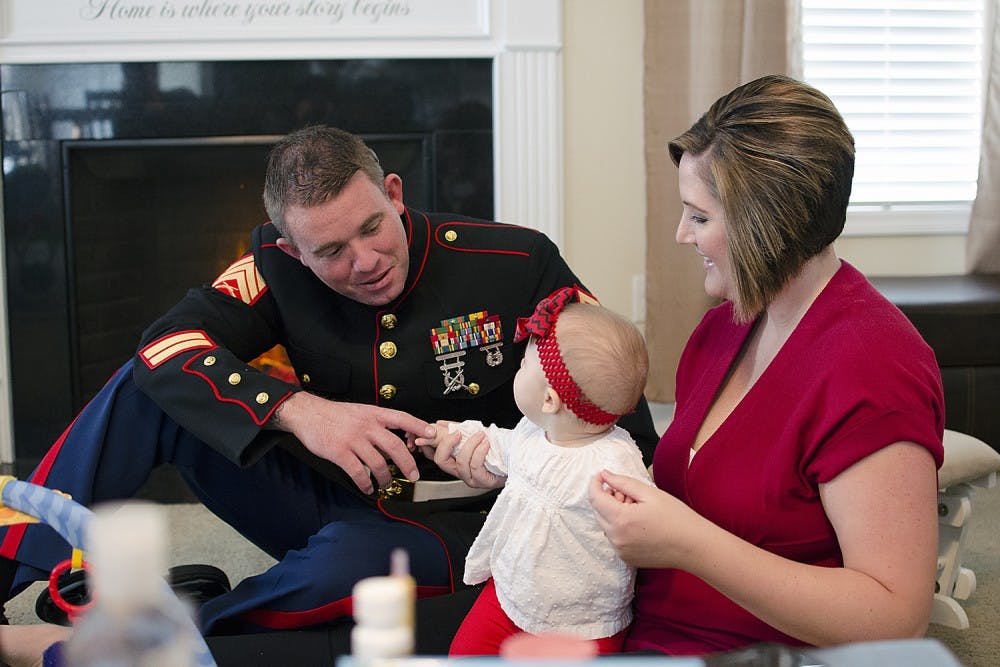“Just hearing my daughter laugh and giggle and stuff — it almost brings tears to my face every time I hear her voice, because it reminds me of when I was deaf.”
Carpenter was injured in explosions while deployed in Iraq, which contributed to the complete loss of hearing in his left ear and the loss of 80 percent of hearing in his right ear. Carpenter also suffered from a traumatic brain injury.
But since Dr. Oliver Adunka surgically implanted a hearing device, Carpenter has regained 100 percent of the hearing in his left ear — something he thought would never happen.
He is one of 14 people in the country to undergo the surgery and — pending FDA approval — he will be the only one to have the hearing aid implanted in both ears.
“Words can’t describe how much this has changed my life,” Carpenter said.
Adunka said Carpenter had a mix of inner- and middle-ear problems due to his injury; the part of the ear a hearing aid would usually connect to was blown out, making the installation of a device problematic.
The sound bridge implanted in Carpenter’s ear is usually intended for use in the middle ear and clips onto a bone in the ear.
“This device was built for people who only have hearing loss in the inner ear,” said Adunka, who at the time of the surgery was an ear, nose and throat specialist with UNC Health Care but has since taken a position at Ohio State.



